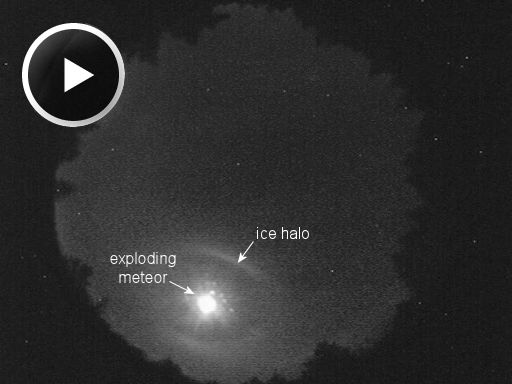
"This movie was captured by a SkySentinal meteor camera on Nov. 4th," says Dwayne Free, Director of Space Coast Intelligent Solutions. "We run a network of meteor cameras 10 times larger than NASA's," he says, "and we have been recording 100s of Taurid fireballs."
The Taurid pictured above did something usually reserved for the sun or Moon. It made an ice halo. Bright light from the exploding meteoroid illuminated six-sided ice crystals in clouds ~10 km above Earth's surface. The result was type of ice halo called a "circumscribed halo." Although the meteor itself may appear to be "punching through the cloud deck," it was in fact much higher--about 50 km above the icy clouds it illuminated.
Earth runs unto the debris zone of Comet Encke every year around this time. Usually, the encounter produces a minor meteor shower, but 2015 is different. "This is higher than usual activity," says meteor expert Peter Brown of the University of Western Ontario. "The Canadian Meteor Orbit Radar (CMOR) is seeing stronger Taurid activity than any of the last few years. Our Southern Ontario Meteor Network cameras caught 54 Taurid fireballs from Oct 31 - Nov 4 alone, compared to 22, 18, and 32 Taurids for the entire month of November in 2014, 2013 and 2012 respectively."
These extra fireballs are coming from a "swarm" of gravelly meteoroids that weaves in and out of Comet Encke's dusty debris zone. In some years, Earth hits the swarm; in other years it misses. 2015 appears to be a hit.
Bron: http://www.spaceweather.com/

 Exploderende meteoor creëert een ijshalo
Exploderende meteoor creëert een ijshalo




